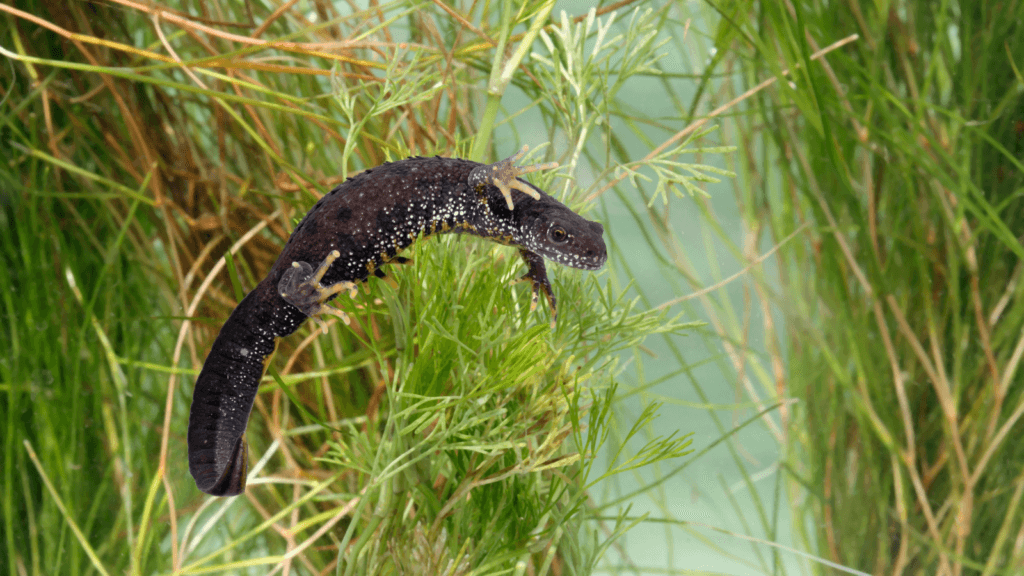Great Crested Newts at Ray Valley Solar
Ray Valley Solar stands as a testament to the power of community-owned energy. However, beneath the solar panels lies a hidden treasure – the great crested newt. In this blog, we’ll delve into the reasons behind the protection of great crested newts, the challenges they face, and the unique habitat they require for their survival.

Why are Great Crested Newts Protected?
The great crested newt (Triturus cristatus) holds the distinguished title of the most protected amphibian in the United Kingdom. This stems from the recognition of the species’ importance and its vulnerability to various threats including:
- Farm chemicals: Agricultural activities, especially the use of pesticides and fertilisers, pose a significant threat to amphibians like the great crested newt. These chemicals can contaminate their habitats, affecting water quality and disrupting the delicate balance of the ecosystem.
- Loss of ponds on farms: Historically, farms used to have numerous ponds, providing ideal breeding grounds for amphibians. However, modern agricultural practices have led to the disappearance of these ponds, leaving amphibians without suitable places to lay their eggs and complete their life cycle. The protection of great crested newts acknowledges the need to preserve their diminishing habitats.
- Fish introduction to newt habitats: The introduction of non-native fish species to ponds has proven disastrous for amphibians. Fish prey on newt eggs and larvae, significantly reducing their chances of survival. The protected status ensures measures are taken to prevent the introduction of fish to newt habitats, allowing these fascinating creatures to thrive without undue predation.
The two-pond lifestyle
One of the distinctive features of great crested newts is their dependency on a two-pond habitat for sustained life. Unlike other amphibians, which may only need a single pond, great crested newts need two interconnected ponds in close proximity. Great crested newts are very particular in their requirements, and will travel up to 1 km to find the right pond.
Action taken at Ray Valley Solar
Once we found great crested newts on our Ray Valley Solar site we needed to proceed with caution with the construction of the planned new ponds and planting works, to ensure that whilst creating an inviting habitat for them we didn’t cause distress. We are now pleased to say we have the two ponds needed to aid their lifecycle.
It is imperative to coexist with and protect the invaluable species that enrich our ecosystems. By understanding and respecting the needs of these protected species, we can pave the way for a coexistence between clean energy production and the preservation of biodiversity.
